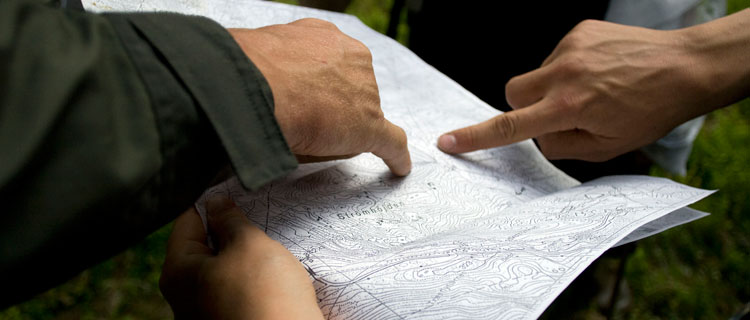
A recently published study shows that the lack of management of landscape connectivity is due to a lack of communication rather than interest. Practitioners lack access to tools for assessing connectivity, but believe that such tools would be valuable to them. Photo: J. Wadman/Azote
Network analysis
Willing but unable
Insufficient management of connectivity in landscape planning due to lack of communication, not interest
- Study examines reasons, benefits and difficulties of using network analysis to manage landscape fragmentation in local planning
- Planners and politicians tend to value landscape connectivity in a human-centred visual way which lacks methodological approach
- Easy-to-use tools could guide practitioners in making better decisions when it comes to landscape fragmentation without rigorous analyses
In academia, the benefits of using network analysis to map the potential movement of species between resource patches is are already well-known. Among practitioners however, there is still much land to cover.
In a new paper published in Landscape and Urban Planning, centre PhD student Arvid Bergsten and Andreas Zetterberg from the Swedish University of Agricultural Sciences have studied the reasons, benefits and difficulties of using network analysis to manage landscape fragmentation in local planning. The results were based on interviews with 13 municipal ecologists and environmental planners in the Stockholm area.
What Bergsten and Zetterberg found was that none of the interviewed practitioners used systematic methods to assess landscape connectivity.
A bit green here, a bit green there
Nearly all of the respondents thought that landscape fragmentation does not receive enough attention in planning, mainly because the practitioners struggle to communicate the significance of landscape connectivity to planners and local politicians.
"Our results show that they currently evaluate connectivity in a human-centered, visual and non-methodical manner,"
Arvid Bergsten, co-author
This was particularly reflected in the quote "it's green here and it's connected to the greenish over there, so it's probably a dispersal corridor".
None of the 13 practitioners currently used systematic methods to assess landscape connectivity. In fact, none had access to such tools. As a result, ecologists have found it difficult to analyze, communicate and ultimately integrate connectivity into planning and conservation. Further, they have found it difficult to assess the consequences of habitat fragmentation, and suggest necessary mitigation measures or restoration strategies.
Another reason why the respondents did not assess landscape connectivity is that it is not considered important or simply not understood by decision-makers.
Show, don't just tell
There was a general consensus among the interviewees that the network approach could be a valuable tool in the planning process, because of its informative results.
As one respondent said:
"The visualization is really important. Instead of just saying in words 'this or that species actually needs a number of meters', I can show that if I take away this patch we will get a gap and two isolated populations. I think that could really make an impact".
Bergsten and Zetterberg are convinced that the adoption of intelligible and easy-to-use tools may significantly increase the impact of ecologists on local planning and decision-making.
"There is of course no guarantee that practitioners will conduct analyses in a completely correct manner as defined by some authoritative scientist. But network analysis is a formalized method that demands the user to be explicit with assumptions, and thus more transparent than the current routines", the authors conclude.
Related info
Full reference: Bergsten, A., A. Zetterberg. 2013. To model the landscape as a network: A practitioner's perspective. Lanscape and Urban Planning. 119: 35-43
Visiting address: Albanovägen 28. Disability entrance: Albanovägen 18
Deliveries: Roslagsvägen 28
Postal address (courier packages):
Stockholms Universitet
Stockholm Resilience Center
[Recipient]
Frescativägen 8
114 18 Stockholm
Sweden
Postal address (letters):
Stockholms Universitet
Stockholm Resilience Center
[Recipient]
Frescativägen 8
SE-106 91 Stockholm
Sweden
Phone: +46 8 674 70 70
Organisation number: 202100-3062
VAT No: SE202100306201






